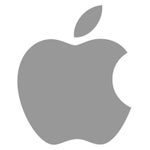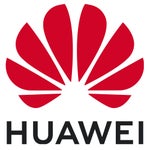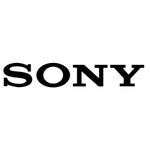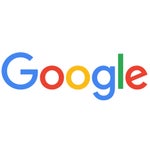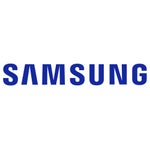News
Apple Foldable iPhone Won’t Have In-Display Fingerprint Sensor, Analyst Claims
Apple Foldable iPhone Won’t Have In-Display Fingerprint Sensor, Analyst Claims
Apple's first foldable iPhone—tentatively dubbed the iPhone Fold—is making waves long before its expected 2026 debut. And one key feature you won’t see? An in-display fingerprint sensor. Despite market speculation, Apple will not equip the foldable iPhone with an under-display ultrasonic fingerprint scanner, according to respected analyst Ming-Chi Kuo. Instead, Apple is reportedly opting for a side-mounted Touch ID sensor, a move that’s both familiar and strategic. This revelation not only shapes expectations for Apple’s foldable ambitions but also gives insight into how the company plans to balance innovation with user experience.
Let’s dive deeper into what this means—and why Apple’s design choices are always more calculated than they first appear.
What We Know So Far About the Apple Foldable iPhone
Though still under wraps, the foldable iPhone has been the subject of extensive industry leaks and forecasts. Here's what insiders and analysts expect:
1. Product Name: iPhone Fold (unofficial)
2. Launch Window: Late 2026
3. Form Factor: Clamshell-style or book-style foldable
4. Display Sizes:
- 7.8-inch internal folding screen
- 5.5-inch external cover display
5. Expected Price: Between $2,000 and $2,500
Apple is known for perfecting rather than pioneering. So, while the foldable iPhone arrives late, it's likely to land with polish and purpose, aiming to disrupt the segment, not just participate. You can read the full analysis on here.
No In-Display Fingerprint Sensor: Here’s Why
Renowned supply chain analyst Ming-Chi Kuo recently shut down rumors suggesting Apple’s foldable phone would feature an under-display ultrasonic fingerprint scanner. Instead, Kuo reaffirmed Apple’s intent to install a side-mounted capacitive Touch ID module—a method already familiar to iPad users.
Why Apple Is Skipping Under-Display Fingerprint Tech:
-
Dual-Screen Challenge: A foldable with both an inner screen and a cover display would require two separate in-display scanners. That’s double the hardware, complexity, and cost.
-
Biometric Consistency: Apple prefers a unified biometric strategy. A side-mounted sensor works whether the phone is folded or unfolded.
-
Performance & Reliability: Ultrasonic scanners still face inconsistency in screen-integrated formats. Capacitive sensors are more reliable and faster in real-world use.
Side-Button Touch ID: The Likely Alternative
Apple already uses side-button Touch ID on the iPad Air and iPad Mini. It's a proven system—secure, fast, and compact. By applying the same to the iPhone Fold, Apple avoids:
-
Display compromises
-
Dual-scanner complexity
-
Increased component costs
Why Side Touch ID Makes Sense:
-
Consistency Across Devices: iPad precedent shows Apple’s comfort with this layout.
-
User Ergonomics: Easy thumb access when opening or closing the foldable.
-
Battery Efficiency: Capacitive sensors consume less power than Face ID or ultrasonic options.
Supplier Spotlight: Luxshare ICT’s Role in Apple’s Supply Chain
According to Kuo, Luxshare ICT will supply the side-mounted fingerprint sensor. This isn't surprising—Luxshare is already a trusted Apple partner.
Who Is Luxshare ICT?
-
A major Chinese electronics manufacturer
-
Works closely with Apple on AirPods and iPhone components
-
Known for fast, high-volume production capabilities
This choice reflects Apple’s consistent supply chain strategy: reliable, localized, and deeply integrated with long-term partners.
Foldable Tech vs. Biometric Innovation: A Delicate Balance
Foldables pose a unique problem for fingerprint scanning: screen accessibility.
-
When folded, only the cover display is accessible.
-
When unfolded, users expect full-screen usability.
This makes biometric placement tricky. Face ID could work—but under-display fingerprint scanning on both panels? Inefficient and costly.
By anchoring authentication on the side, Apple streamlines the experience regardless of how the device is used.
Industry Impact & Market Expectations
Apple isn’t first to the foldable game—but they’re almost always the one to redefine the rules.
Where Competitors Stand:
-
Samsung Galaxy Z Fold5: In-display fingerprint scanner + Face recognition
-
Google Pixel Fold: Side-mounted fingerprint sensor
-
Huawei Mate X3: Side-mounted capacitive fingerprint reader
Apple is following the proven path of Google and Huawei, prioritizing reliability over flash.
What Sets Apple Apart:
-
Tight ecosystem integration
-
Premium build quality and materials
-
Unmatched software optimization
Expect Apple to introduce unique features that make foldables more than just a gimmick—but a true productivity tool.
Conclusion
The foldable iPhone is shaping up to be classic Apple: late, polished, and confidently different. While competitors chase under-display tricks, Apple’s side-mounted Touch ID decision signals a focus on usability, consistency, and reliability. With the expected $2,000+ price tag, buyers will demand more than novelty—they’ll expect seamless performance. And biometric security is a big part of that. One thing’s clear: Apple’s foldable strategy isn’t just about bending glass—it’s about not breaking trust.
Related Articles
Frequently Asked Questions
1. Will the foldable iPhone have Touch ID?
Yes, according to reports, it will feature a side-mounted Touch ID sensor, not an in-display scanner.
2. Why is Apple not using an under-display fingerprint scanner?
The design complexity and reliability concerns of using two under-display sensors outweigh the benefits. Apple prefers a single, consistent biometric approach.
3. Who is Luxshare ICT and why is it important?
Luxshare ICT is Apple’s component supplier for the Touch ID module. Their role indicates Apple’s commitment to proven, scalable tech.
4. When will the Apple Foldable iPhone release?
The foldable iPhone is expected to launch in late 2026, though this could shift depending on production timelines.
5. What’s the expected price of the iPhone Fold?
Industry estimates suggest a price between $2,000 and $2,500, positioning it in the ultra-premium segment.

